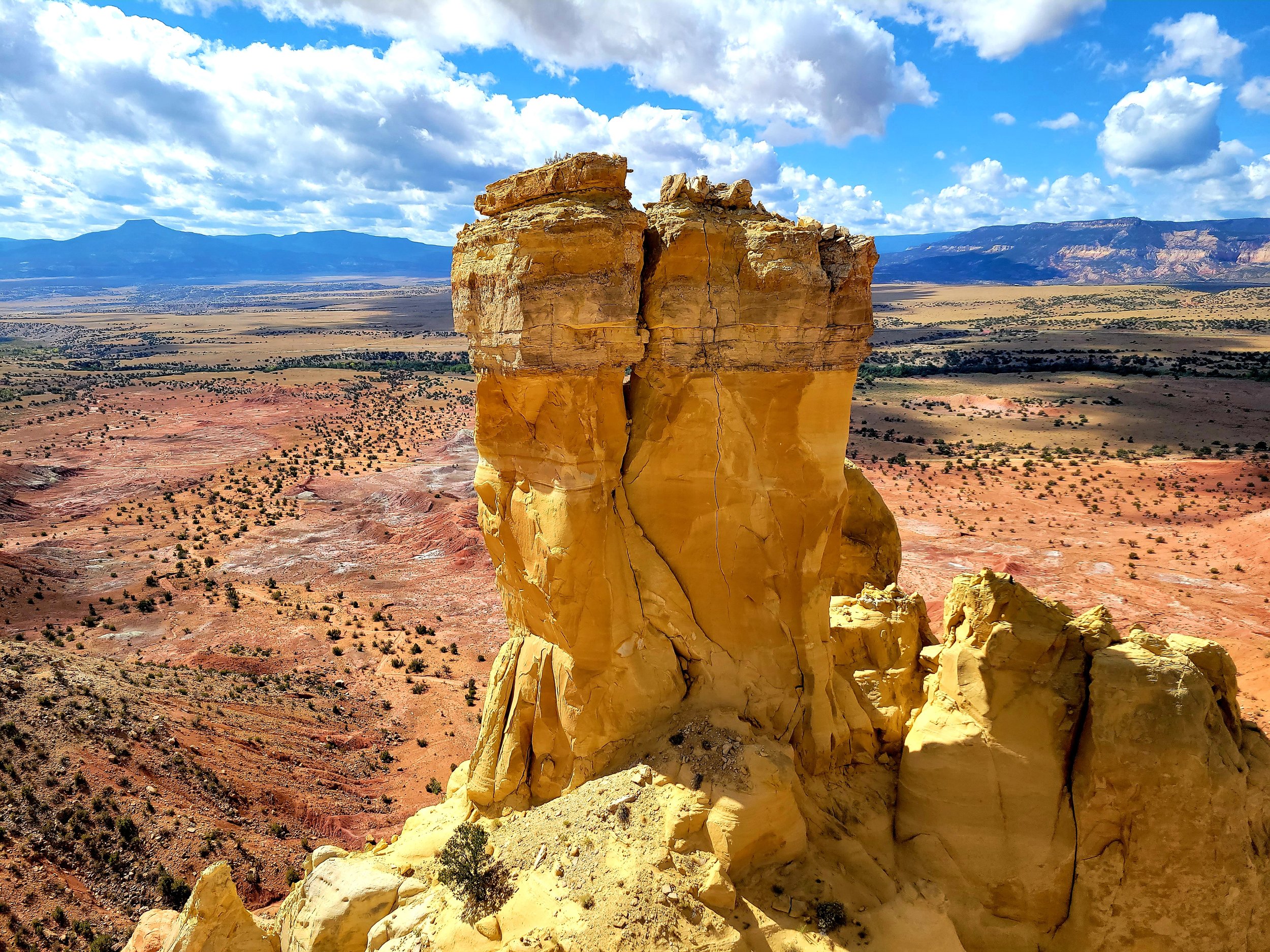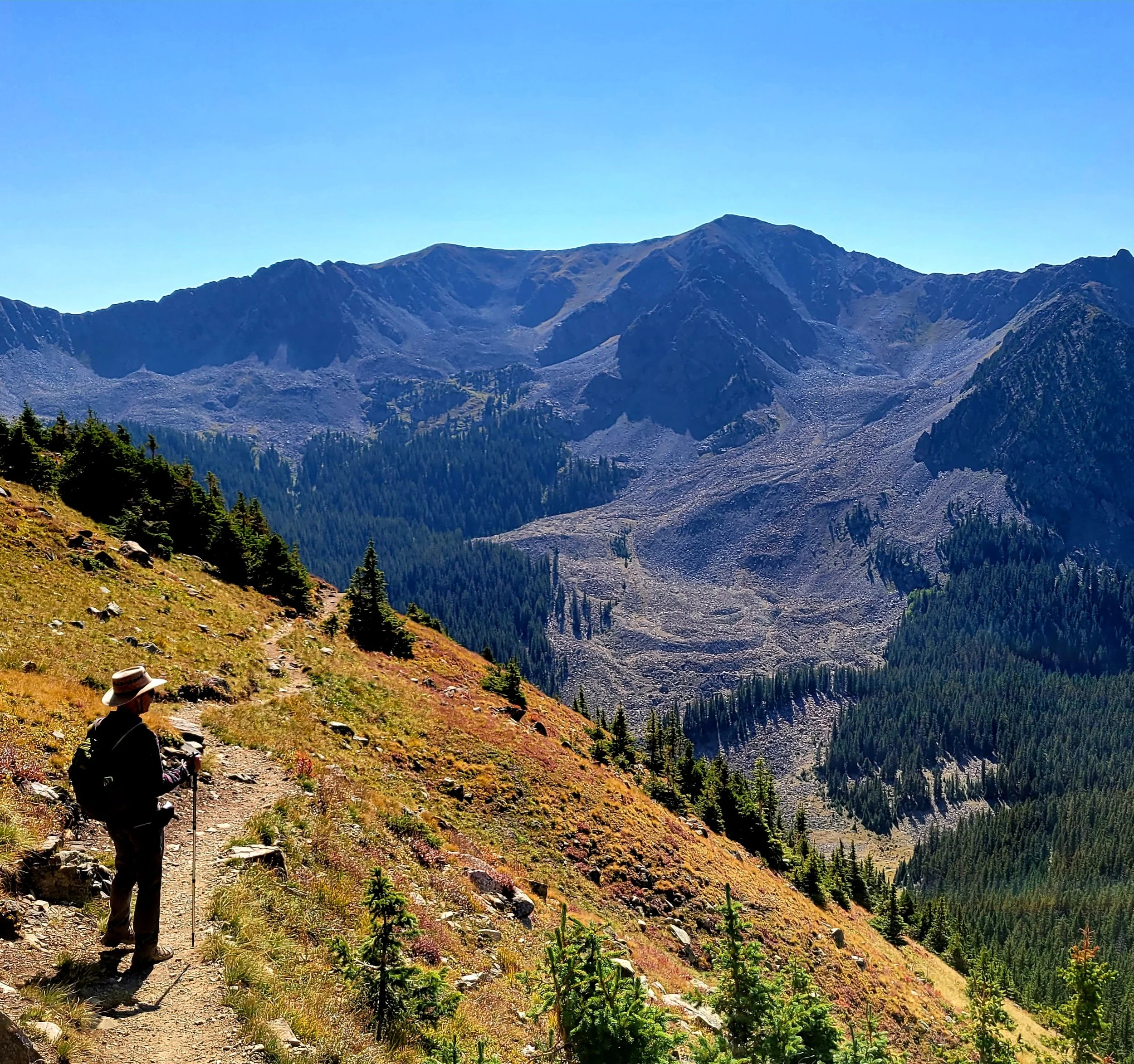The Landscapes of Northern New Mexico
The Valles Caldera and Ponderosa Trees
Northern New Mexico is blessed with a variety of landscapes which blend into one another in many enchanting ways. Our thin dry air can permit views of over 100 miles of sun-drenched country, with blue mountains glowing over arid basins dotted with junipers in nearly every direction you choose to look.
Classifying this variety, in terms of its long natural history, presents some challenges. But in a basic way it falls out like this:
The Sangre de Cristo Mountains, the southernmost range of the American Rockies, are cut into large upthrusts of crystalline rock - durable rocks like granite, gneiss, and schist, that glitter with feldspar, quartz, and mica. These thickly forested mountains stand high and dominate our views.
The Bandelier landscape, on the Pajarito Plateau, is cut into young volcanic rock. The most impressive of these are thick cliff-forming sheets of volcanic ash and pumice called tuff. Lava domes and a great park-like area called the Valles Caldera lie beyond, so young that they are barely touched by erosion.
The Ghost Ranch landscape, on the Colorado Plateau, is cut into colorful, flat-lying layers of sedimentary rock - soft rocks like mudstone, sandstone, and gypsum. Iron oxide stains create a palette of warm red colors, so beloved by Georgia O’Keeffe.
The Rio Grande steps southward across a series of down-faulted basins, filled with soft gravels, sand, and mud, washed in from the bordering mountains. In those places where hard lava has flowed onto the basin floors, the river has cut spectacular canyons, and left flat topped mesas towering above.
Chimney Rock above Ghost Ranch
All of Northern New Mexico sits far above sea level. Santa Fe is 7000’ above the sea. The projecting peaks of the Sangre de Cristo Mountains rise a mile higher to elevations of just above 13,000’. The floors of the deepest canyons of the Rio Grande are still over a mile above the sea.
In spite of our arid climate, these elevations are high enough to support a variety of evergreen coniferous forests.
The so-called pygmy forest, the pinyon-juniper woodlands, unique to the western slope of the Rockies, thrives between elevations of 6000’ - 7000’. Below these woodlands thrifty juniper trees dominate in a more open grassland savannah.
Ponderosa pines and a variety of Rocky Mountain conifers like White fir, Limber pine, and Douglas fir enjoy each other’s company in the mixed-conifer forest, happiest between elevations of 7000’ to 10,000’. The delicate balance of sun and moisture that varies across north and south-facing slopes makes a lovely patchwork in this ecosystem.
Above 10,000’, and extending up to tree line, is the dense spruce-fir forest. This somber forest is enlivened with bright sunny groves of aspen, and grassy meadows dotted with wildflowers in season. A wonderful balsamic fragrance fills these woods in summer, and in winter, deep snow covers the forest floor.
On the highest ridges, where no tree can thrive, the true alpine flowers bloom among the rocks in brilliant jewel-like colors. Only the hardiest hikers enjoy these fleeting July treasures. No paved road in New Mexico reaches the mountain tundra. You have to walk.
At the tree line in the Sangre de Cristo Mountains
About the author
Scott Renbarger is a local outdoor enthusiast and guide in Santa Fe, and occasional adjunct instructor of geology at Santa Fe Community College. He is a board member of the Santa Fe Professional Tour Guides. Through his company Outspire Hiking and Snowshoeing, Scott leads individually-arranged hikes for small groups in Santa Fe National Forest, Bandelier National Monument, and the canyon country along the Rio Grande. Snowshoe adventures are offered in the winter season when conditions permit. And he’s always happy to set up a geology walk - his favorite subject! - for you, in the foothills of the Sangre de Cristo Mountains above Santa Fe.



